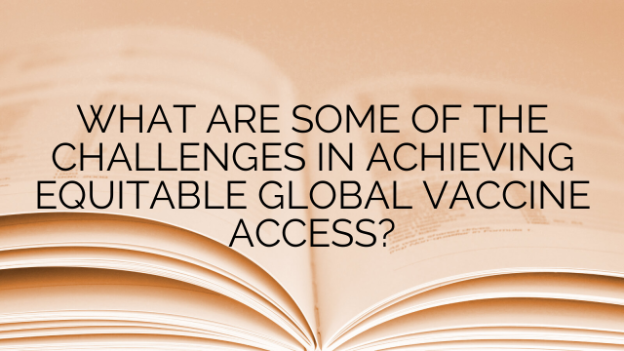There are several major challenges that make achieving equitable global access to vaccines difficult. One fundamental challenge is financial – it is extremely costly to research, develop, clinically test, mass produce, and distribute vaccines worldwide. Private pharmaceutical companies take on huge financial risks and costs to bring new vaccines to market. While governments and organizations like Gavi provide some funding support for vaccines in lower-income countries, there are still many countries that cannot afford to purchase large amounts of vaccines on their own. The costs of scaling up vaccine production and building out cold chain infrastructure is also enormous. With limited healthcare budgets, many developing nations struggle to purchase enough doses to satisfy global herd immunity thresholds.
Related to financial constraints is the issue of global prioritization during short supply situations. When new vaccines are first introduced or during a pandemic, there may not be enough supply initially to meet global demand. Wealthier countries that can pay top dollar often receive priority allocation from manufacturers in the short-term. This delays access for lower-income populations, though donation and redistribution efforts through Gavi and others help to address this over time. Global coordination on vaccine production and distribution timelines is challenging given commercial and geopolitical interests at play.
Health system weaknesses pose another hurdle. Even when vaccines are donated or subsidized, delivering them effectively to populations requires robust cold chain storage and transportation infrastructure, training for healthcare workers, and systems to conduct mass vaccination campaigns. Many developing nations lack optimal primary healthcare systems and face difficulties in keeping vaccines within recommended temperature ranges during storage and transit to remote locales. They may also have shortages of needles, syringes and other supplies needed to administer vaccines safely and at scale. Community distrust and lower demand further undermine vaccination programs in some contexts.
Intellectual property policies can also inhibit equitable access. Vaccine manufacturers depend on patents and clinical data exclusivity periods to recoup R&D investments. Some argue this delays the entry of lower-cost generic competitors in developing countries. There are efforts like the COVID-19 Technology Access Pool to voluntarily pool IP, but uptake has been limited. Compulsory licensing which allows governments to override patents in emergencies remains controversial. Striking the right balance between innovation incentives and ensuring timely availability of affordable vaccines is complex with arguments on both sides.
Then there are challenges related to mis- and disinformation online which can spread quickly worldwide. Unfounded claims linking vaccines to autism or other conditions have taken root in some communities and successfully lowered immunization rates. With a deluge of health advice online, it becomes difficult for local public health officials and community leaders to combat myths and allay fears. Digital platforms are criticized for not doing enough to curb the spread of provably false anti-vaccine narratives. At the same time, censoring speech risks further alienating hesitant populations. Nuanced messaging and building trust becomes ever more crucial.
The geopolitics of vaccines cannot be ignored. Donations and partnerships are sometimes influenced as much by diplomatic goals as pure public health priorities. Some nations may donate surplus doses to curry favor with recipient countries. On the other hand, vaccine nationalism where wealthy states secure enough doses for their entire populations before supporting global distribution efforts can undermine the cooperative spirit needed. There is an inherent tension between a country prioritizing its own citizens’ health versus contributing to slowing the worldwide pandemic that ignores borders. Overall coordination at multilateral levels remains a work in progress.
The multitude of financial, logistical, technological, informational, policy and geopolitical factors pose interconnected hurdles. Overcoming them requires not only more resources but innovative cooperation between governments, vaccine developers, health agencies and community organizations. Substantial progress has been made in global vaccine access in the past two decades, but achieving full equitable distribution in a crisis demands rethinking traditional R&D and supply chain models for the long run. With political will and collective action, many of these challenges can be gradually ameliorated.
